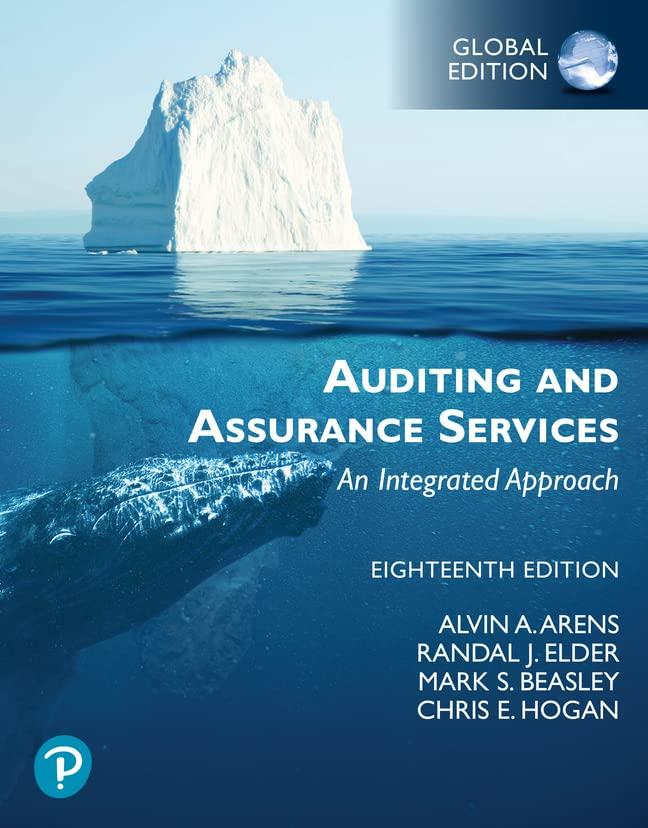Question
On February 1, 2016, Arrow Construction Company entered into a three-year construction contract to build a bridge for a price of $8,000,000. During 2016, costs
| On February 1, 2016, Arrow Construction Company entered into a three-year construction contract to build a bridge for a price of $8,000,000. During 2016, costs of $2,000,000 were incurred with estimated costs of $4,000,000 yet to be incurred. Billings of $2,500,000 were sent, and cash collected was $2,250,000. |
| In 2017, costs incurred were $2,500,000 with remaining costs estimated to be $3,600,000. 2017 billings were $2,750,000, and $2,475,000 cash was collected. The project was completed in 2018 after additional costs of $3,800,000 were incurred. The companys fiscal year-end is December 31. Arrow recognizes revenue over time according to percentage of completion. |
| Required: | |||||||||||||||||||||||||||||||||||||||||||||||||||||||||||||||||||||||||||||||||||||||||||||||||||||||||||||||||||||||||||||||||||||||||||||||||
| 1. | Compute the amount of revenue and gross profit or loss to be recognized in 2016, 2017, and 2018 using the percentage of completion method? (Do not round intermediate calculations. Round your final answers to the nearest whole dollar.)
| ||||||||||||||||||||||||||||||||||||||||||||||||||||||||||||||||||||||||||||||||||||||||||||||||||||||||||||||||||||||||||||||||||||||||||||||||
|
|
| ||||||||||||||||||||||||||||||||||||||||||||||||||||||||||||||||||||||||||||||||||||||||||||||||||||||||||||||||||||||||||||||||||||||||||||||||
| 2-a. | Prepare journal entries for 2016 to record the transactions described (credit "various accounts" for construction costs incurred). (If no entry is required for a transaction/event, select "No journal entry required" in the first account field. Do not round intermediate calculations. Round your answers to the nearest dollar amount.)
| ||||
|
|
|
| 2-b. | Prepare journal entries for 2017 to record the transactions described (credit "various accounts" for construction costs incurred). (If no entry is required for a transaction/event, select "No journal entry required" in the first account field. Do not round intermediate calculations. Round your answers to the nearest dollar amount.) |
|
|
|
| 3-a. | Prepare a partial balance sheet to show the presentation of the project as of December 31, 2016. (Do not round intermediate calculations. Round your answers to the nearest dollar amount.)
| ||||||||||||||||||||||||||
|
|
| ||||||||||||||||||||||||||
| 3-b. | Prepare a partial balance sheet to show the presentation of the project as of December 31, 2017. (Do not round intermediate calculations. Round your answers to the nearest dollar amount.) | ||||||||||||||||||||||||
|
|
| ||||||||||||||||||||||||
|
| |||||||||||||||||||||||||
|
| ||||||||||||||||||||||||
Step by Step Solution
There are 3 Steps involved in it
Step: 1

Get Instant Access to Expert-Tailored Solutions
See step-by-step solutions with expert insights and AI powered tools for academic success
Step: 2

Step: 3

Ace Your Homework with AI
Get the answers you need in no time with our AI-driven, step-by-step assistance
Get Started


